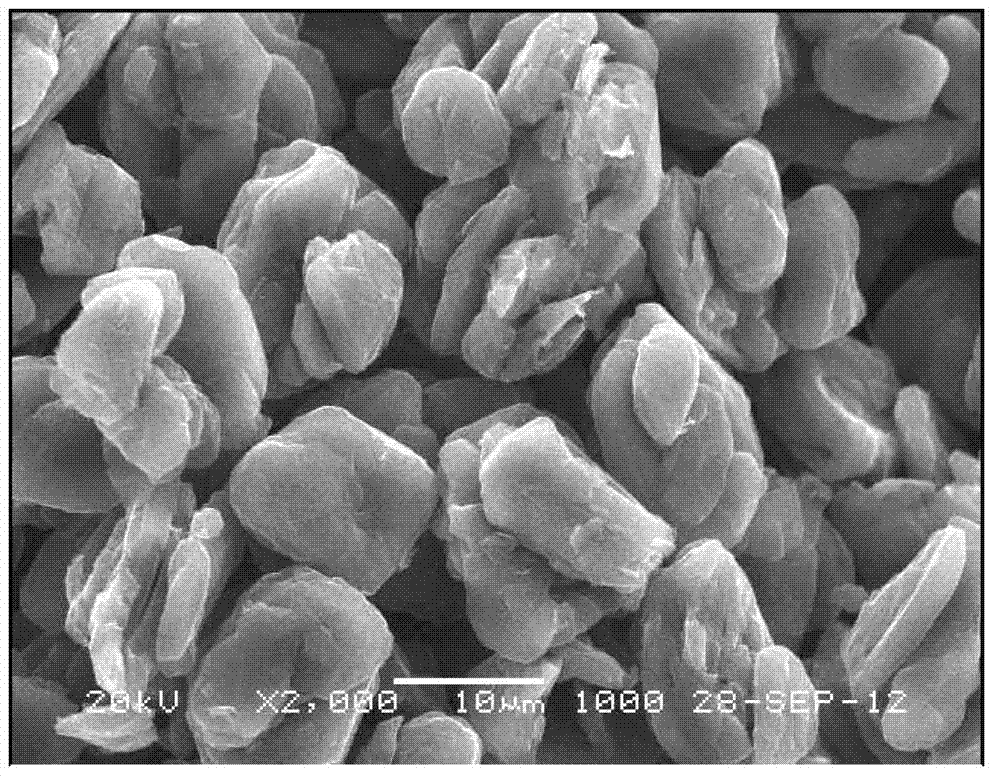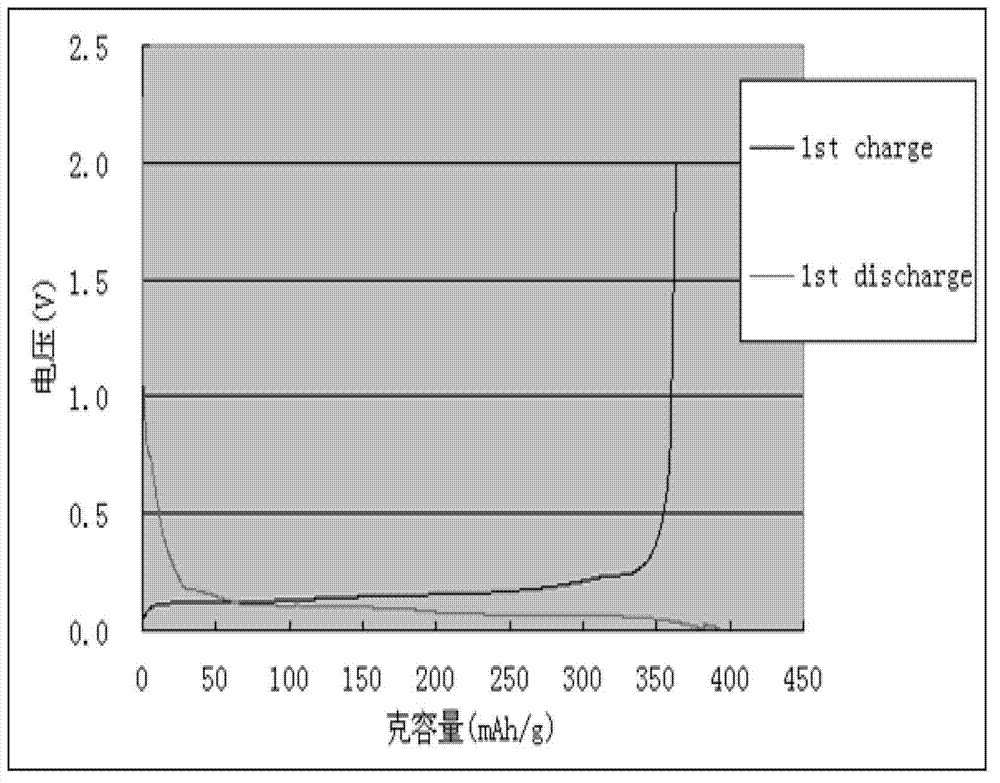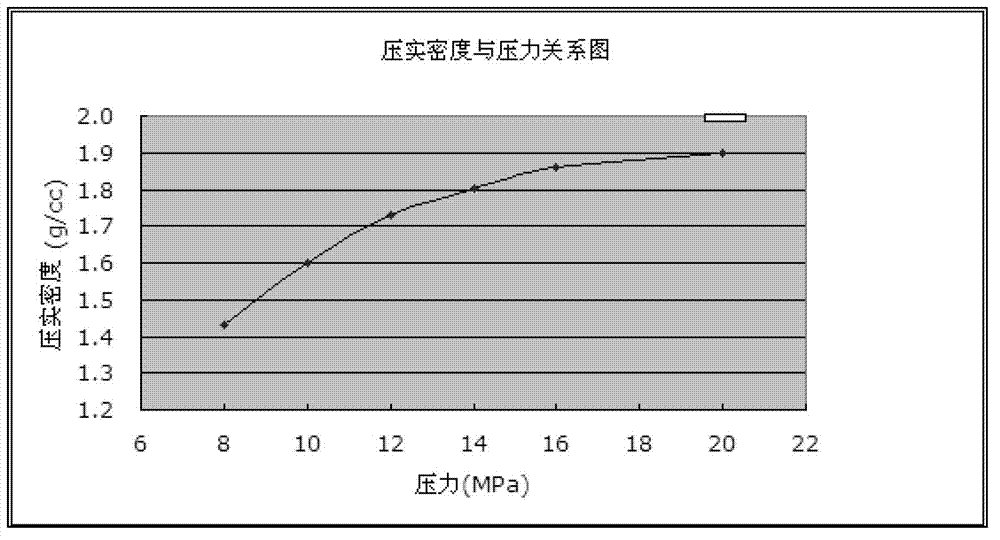Preparation method of compound graphite material for lithium ion secondary battery
A lithium-ion battery and composite graphite technology, which is applied in the direction of graphite, battery electrodes, chemical instruments and methods, etc., can solve the problems of large electrode expansion, battery magnification, and low temperature performance that cannot meet higher and higher requirements, lithium ion detachment, intercalation, etc. Path length and other issues
- Summary
- Abstract
- Description
- Claims
- Application Information
AI Technical Summary
Problems solved by technology
Method used
Image
Examples
preparation example Construction
[0028] The preparation method of the present invention comprises the following steps:
[0029] (1) Mixing of raw materials: put natural graphite, binder, and graphite catalyst as raw materials into the drum furnace, and the drum keeps rotating during the feeding process of raw materials; the mass percentage content of each component in the raw materials is:
[0030] Natural graphite: 70% to 90%;
[0031] Binder: 5% to 30%;
[0032] Graphite catalyst: 1% to 5%;
[0033] The binder is a material capable of forming artificial graphite after graphitization; the natural graphite is coated by stirring the binder, and the bonding of the natural graphite is realized.
[0034] (2) Progressive heating: The heating of the raw materials in the furnace adopts a gradual heating and heating method. During the heating process, the drum furnace keeps rotating, and the drum speed is adjusted to 10-100Hz. It includes the following heating stages:
[0035] The first stage, from room temperatu...
Embodiment 1
[0050] Throw 222.5kg of natural graphite (D5015um), 25kg of coal tar pitch (D5010um) and 2.5kg of graphitization catalyst SiC into the drum furnace, feed while the drum is rotating, and heat and knead after feeding. Adjust the rotating speed of the drum to 30Hz, and the heating program is as follows: normal temperature to 200°C for 1 hour, 200°C to 400°C for 3 hours, 400°C to 600°C for 3 hours, 600°C for 2 hours. Let cool to room temperature. Then catalyzed graphitization treatment at 3000°C and chlorine gas. The resulting graphitized material was sieved, and large particles were removed with a 250-mesh screen to obtain composite graphite particles (D5021.0um), with a capacity of 362mAh / g and an efficiency of 92.1%.
[0051] The composite graphite particle index that present embodiment makes is as follows table 1:
[0052]
[0053] See figure 1 As shown, the composite graphite material finally obtained after treatment has natural graphite in its center, and the outer lay...
Embodiment 2
[0056] Throw 210kg of natural graphite (D5013um), 37.5kg of coal tar pitch (D5012um) and 22.5kg of graphitization catalyst SiO into the drum furnace, feed while the drum is rotating, and heat and knead after feeding. Adjust the rotating speed of the drum to 30Hz, and the heating program is as follows: room temperature to 200°C for 2 hours, 200°C to 400°C for 5 hours, 400°C to 600°C for 5 hours, 600°C for 3 hours. Let cool to room temperature. Then catalyzed graphitization treatment at 3000°C and chlorine gas. The resulting graphitized material was sieved, and large particles were removed with a 250-mesh screen to obtain composite graphite particles (D5020um), with a capacity of 363mAh / g and an efficiency of 92.4%.
PUM
| Property | Measurement | Unit |
|---|---|---|
| The average particle size | aaaaa | aaaaa |
| Particle size | aaaaa | aaaaa |
Abstract
Description
Claims
Application Information
 Login to View More
Login to View More - R&D
- Intellectual Property
- Life Sciences
- Materials
- Tech Scout
- Unparalleled Data Quality
- Higher Quality Content
- 60% Fewer Hallucinations
Browse by: Latest US Patents, China's latest patents, Technical Efficacy Thesaurus, Application Domain, Technology Topic, Popular Technical Reports.
© 2025 PatSnap. All rights reserved.Legal|Privacy policy|Modern Slavery Act Transparency Statement|Sitemap|About US| Contact US: help@patsnap.com



